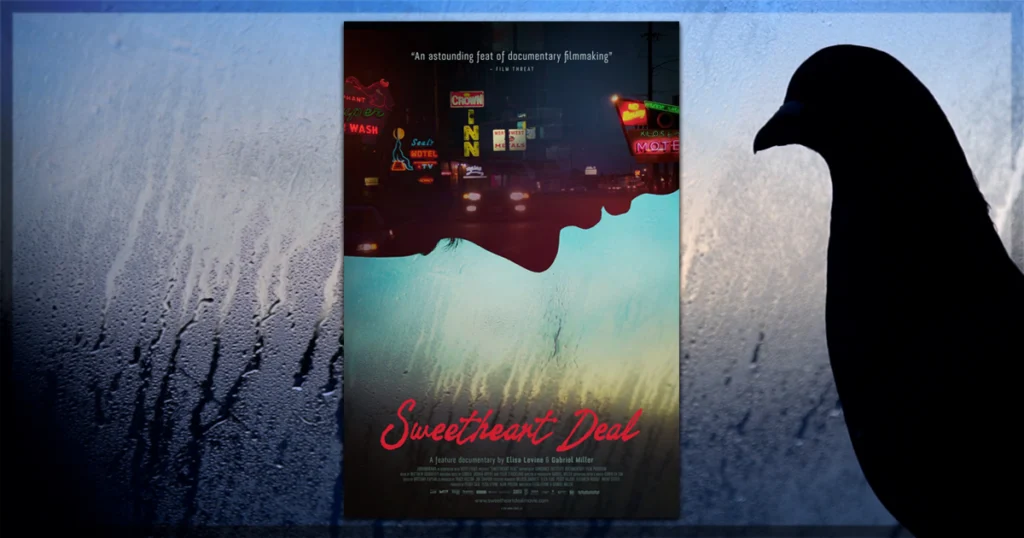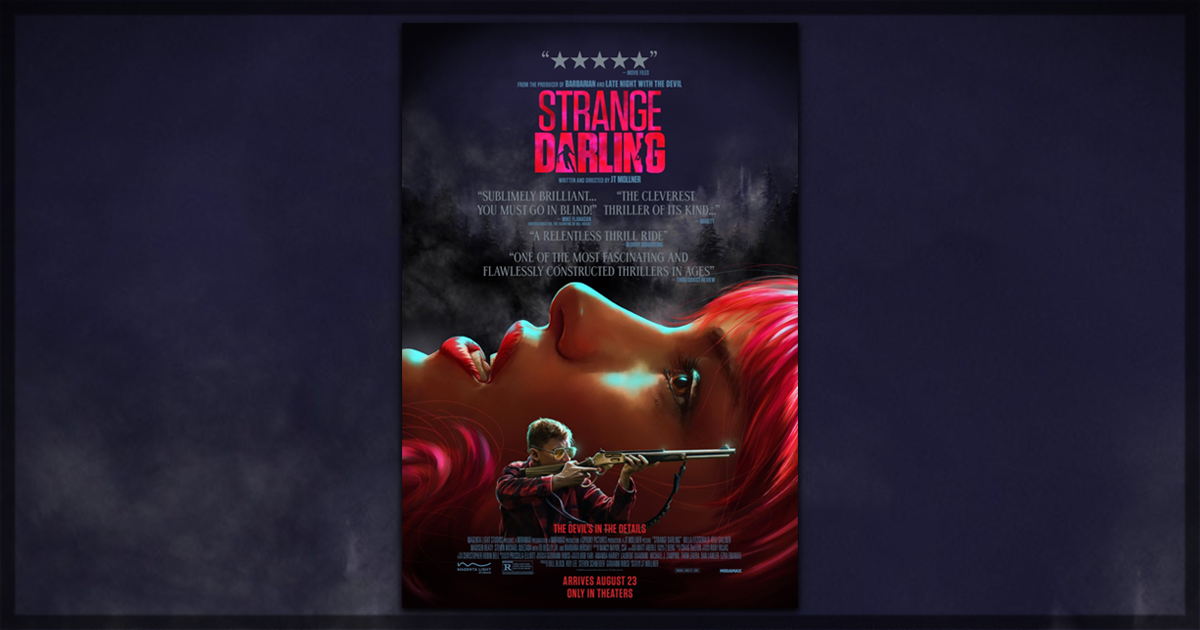Strange Darling is a strange film indeed. I was advised by a colleague of mine to go into my viewing as blind as possible. That’s something I’m rarely able to accomplish with the nature of my job demanding a strong knowledge of upcoming releases and my curious nature leading me to watch any and all trailers that pique my interest; however, I sat down to watch the film with the vague recollection of hearing its premise centered on a serial killer and nothing more. I had no idea of the brutally twisted, mesmerizingly crafted thriller I was in for, and I had a blast experiencing it.
What is Strange Darling about?
I’ll keep plot details to a minimum so that audiences can experience this film in the same manner I did. In actuality, there aren’t a ton of plot details to begin with. The story does center on a serial killer and what unfolds is, on the surface, a relatively simple game of cat and mouse. The hunter is on the chase and the prey is on the run. Where Strange Darling sets itself apart is in its delivery.
The film opens by declaring itself a “thriller in six chapters.” There are six distinct chapters; however, they are not shown in sequential order and the story unfolds through a non-linear narrative. It’s a stylistic choice that I don’t often love, but writer/director JT Mollner uses the narrative device brilliantly. It’s a chaotic experience from start to finish, and the jarring nature of the seemingly random delivery only adds to the chaos. Of course, nothing about the film is truly random, and the dissected delivery of the story is meticulously handled. Each chapter gives a bit more information while simultaneously raising several more questions.
Neo-Noir and Exploitation Collide
There’s a unique mixture of genres and stylistic choices at play here. Parts of the film feel inherently inspired by 70’s exploitation and grindhouse, with the early segments feeling especially reminiscent of Tobe Hooper’s The Texas Chainsaw Massacre. The classic “final girl” trope is put to use, but given a twist, with Willa Fitzgerald’s character, credited only as “The Lady,” running desperately for her life while being chased by a relentless pursuer. But Mollner never stays married to a single cinematic style, and he never allows the homage to overshadow his own vision.
The fast-paced nature of the story rarely lets up, yet despite its pulse-pounding, frenetic energy, there is a surprising amount of subtlety and attention in the details. The visual style shifts frequently and elegantly, like a kaleidoscope of blood and neon. It’s a confident and gritty neo-noir that succeeds not only due to Mollner’s precision behind the camera, but the performances in front of it, as well.
Kyle Gallner (Smile), credited as “The Demon,” gives the best performance of his career. It’s a far more layered and nuanced performance than you’d expect from a character with a title as menacing as his. There’s one scene in particular, void of the brutality of the rest of the film, where Gallner showcases his range. It’s a highlight of the film. There are a handful of smaller, supporting roles, but for the most part Gallner and Fitzgerald are the only actors we see, and the believability of the largely outrageous depictions hangs on their delivery.
Strange Darling is one of the best films of the year. It’s a melting pot of a movie. It’s an edge of your seat thrill ride with comedic undertones, that succeeds at being an homage and thrives in its gratuitousness. JT Mollner is still relatively new in the world of directing feature films; however, his skills are on full display. I loved watching this movie, and I encourage viewers to go into it the same way I did.
Strange Darling is now in theaters.
Learn more about the movie, including how to buy tickets, at the official website.
You might also like…

‘Sweetheart Deal’ Review: An Unflinching and Poignant Look at Sex Work

